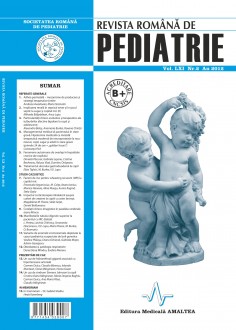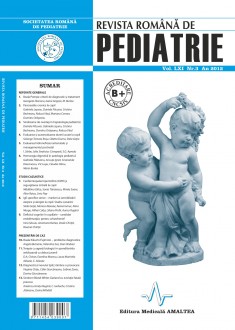SELECT ISSUE

Indexed

| |

|
|
|
| |
|
|
|

|
|
|
|
|
|
|
HIGHLIGHTS
National Awards “Science and Research”
NEW! RJP has announced the annually National Award for "Science and Research" for the best scientific articles published throughout the year in the official journal.
Read the Recommendations for the Conduct, Reporting, Editing, and Publication of Scholarly work in Medical Journals.
The published medical research literature is a global public good. Medical journal editors have a social responsibility to promote global health by publishing, whenever possible, research that furthers health worldwide.
Overlap and other autoimmune phenomena in pediatric chronic hepatic disease
Daniela Pacurar, Gabriela Lesanu, Cristina Becheanu, Raluca Vlad and Dumitru Oraseanu
ABSTRACT
Patients with chronic liver disease can present serological immune associations or a real overlap syndrome. The hepatic overlap syndrome includes biochemical and histological features either for two autoimmune hepatic diseases or for one autoimmune hepatitis and another chronic hepatic disease (chronic viral hepatitis B or C, Wilson’s disease, fatty liver disease). In the absence of appropriate treatment, the natural course of autoimmune hepatitis and overlap syndromes is towards cirrhosis and liver failure. The diagnostic criteria, prognostic scores and predictive factors for overlap syndromes are not yet established. The serological immune reactions are also found in liver disease other than autoimmune hepatitis. In chronic viral hepatitis C different types of immunological manifestations are oftenly associated. In non-alcoholic fatty liver disease the high prevalence of self-antibodies indicates the presence of an autoimmune response; on the other hand these antibodies can help predict the severity of the disease. The medical therapy of either the autoimmune reaction or the underlying hepatic disease should use an individualized algorithm regarding drug associations, dosing and duration of treatment.
Key words: hepatitis, overlap syndrome

